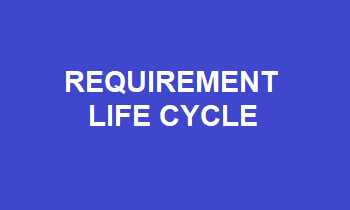Requirement Life Cycle Management
The ‘Requirement Life Cycle Management’ outlines the responsibility assigned to a Business Analyst for taking ownership of continuously handling the project requirements, right from the initiation to the final delivery of the project.
This entire requirement life cycle management involves various processes such as monitoring, planning, analysis, management, and communication. This ensures the outcome of the envisioned project meets the requirements of the stakeholders. To keep the requirement on the right track, there’s a requirement for someone who is skilled enough. One who can identify the relationship between various features or designs, evaluate changes, etc. and maintain efficiently.
Tasks involved in Requirement Life Cycle Management
A list of tasks involved in Requirement Life Cycle Management is defined below:
- Tracing the requirements: The main purpose of this task is to establish collaboration between the business requirements and the designs. Ensuring the designs and the requirements are synced properly.
- Maintaining the requirements: Ensuring the syncing between the business requirements and the designs are consistent at every level throughout the requirement life cycle. Digging into some existing piece of code that can be reused to reduce the effort. And increase the development velocity or possibly create another package of code that can be reused later in the same or another project.
- Prioritizing the requirements: Apart from having an idea about the exact business requirements, a business analyst must also know how to prioritize the tasks or features based on their importance. This involves identifying the key decision-making stakeholders with whom the priority of the features can be discussed and sorted. The business analyst must have the consensus of all the stakeholders about prioritizing the tasks.
- Assessing the requirements changes: Considering certain scenarios where there is a change in the business requirements, a BA should have the know-how to assess the change. The BA should be able to calculate the revised budget & timeframe for the project. Also, the BA should ensure that the proposed changes in the business requirement and estimates are well informed to all the stakeholders.
- Approving the requirements: When the above-defined tasks are well settled, the last step involves informing the stakeholders. The BA must procure stakeholders’ consensus or approval on the agreement involving the business requirements and the designs. The approval received from the stakeholders defines the actual scope of the project.




Post Comment